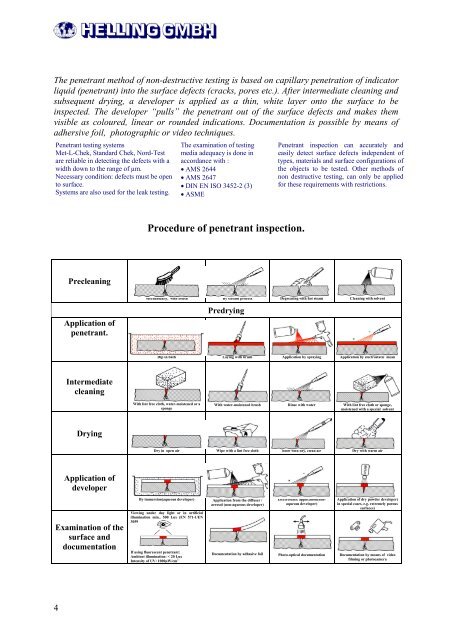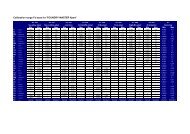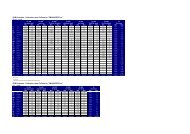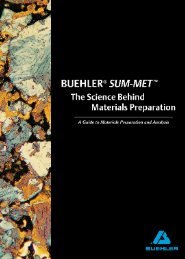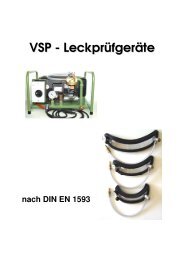Non destructive testing
Non destructive testing
Non destructive testing
Create successful ePaper yourself
Turn your PDF publications into a flip-book with our unique Google optimized e-Paper software.
The penetrant method of non-<strong>destructive</strong> <strong>testing</strong> is based on capillary penetration of indicator<br />
liquid (penetrant) into the surface defects (cracks, pores etc.). After intermediate cleaning and<br />
subsequent drying, a developer is applied as a thin, white layer onto the surface to be<br />
inspected. The developer “pulls” the penetrant out of the surface defects and makes them<br />
visible as coloured, linear or rounded indications. Documentation is possible by means of<br />
adhersive foil, photographic or video techniques.<br />
Penetrant <strong>testing</strong> systems<br />
Met-L-Chek, Standard Chek, Nord-Test<br />
are reliable in detecting the defects with a<br />
width down to the range of µm.<br />
Necessary condition: defects must be open<br />
to surface.<br />
Systems are also used for the leak <strong>testing</strong>.<br />
The examination of <strong>testing</strong><br />
media adequacy is done in<br />
accordance with :<br />
• AMS 2644<br />
• AMS 2647<br />
• DIN EN ISO 3452-2 (3)<br />
• ASME<br />
Penetrant inspection can accurately and<br />
easily detect surface defects independent of<br />
types, materials and surface configurations of<br />
the objects to be tested. Other methods of<br />
non <strong>destructive</strong> <strong>testing</strong>, can only be applied<br />
for these requirements with restrictions.<br />
Procedure of penetrant inspection.<br />
Precleaning<br />
Application of<br />
penetrant.<br />
Mechanically, with brush By stream process Degreasing with hot steam Cleaning with solvent<br />
Predrying<br />
Dip in bath Laying with brush Application by spraying Application by electrostatic mean<br />
Intermediate<br />
cleaning<br />
With lint free cloth, water-moistened or a<br />
sponge<br />
With water-moistened brush Rinse with water With lint free cloth or sponge,<br />
moistened with a special solvent<br />
Drying<br />
Dry in open air Wipe with a lint free cloth Blow with dry, clean air Dry with warm air<br />
Application of<br />
developer<br />
Examination of the<br />
surface and<br />
documentation<br />
By immersion(aqueous developer) Application from the diffuser /<br />
aerosol (non-aqueous developer)<br />
Viewing under day light or in artificial<br />
illumination min.. 500 Lux (EN 571-1/EN<br />
3059)<br />
Electrostatic application(nonaqueous<br />
developer)<br />
Application of dry powder developer(<br />
in special cases, e.g. extremely porous<br />
surfaces)<br />
If using fluorescent penetrant:<br />
Documentation by adhasive foil<br />
Ambient illumination: < 20 Lux<br />
Photo-optical documentation Documentation by means of video<br />
Intensity of UV: 1000µW/cm 2 filming or photocamera<br />
4


